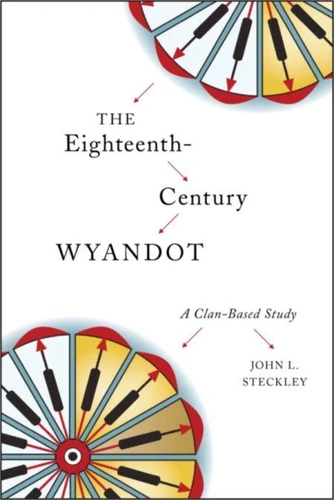The Eighteenth-Century Wyandot. A Clan-Based Study
Par :Formats :
Disponible dans votre compte client Decitre ou Furet du Nord dès validation de votre commande. Le format ePub est :
- Compatible avec une lecture sur My Vivlio (smartphone, tablette, ordinateur)
- Compatible avec une lecture sur liseuses Vivlio
- Pour les liseuses autres que Vivlio, vous devez utiliser le logiciel Adobe Digital Edition. Non compatible avec la lecture sur les liseuses Kindle, Remarkable et Sony
 , qui est-ce ?
, qui est-ce ?Notre partenaire de plateforme de lecture numérique où vous retrouverez l'ensemble de vos ebooks gratuitement
Pour en savoir plus sur nos ebooks, consultez notre aide en ligne ici
- Nombre de pages316
- FormatePub
- ISBN978-1-55458-958-6
- EAN9781554589586
- Date de parution25/03/2014
- Protection num.Digital Watermarking
- Taille6 Mo
- Infos supplémentairesepub
- ÉditeurWilfrid Laurier University Press
Résumé
The Wyandot were born of two Wendat peoples encountered by the French in the first half of the seventeenth century-the otherwise named Petun and Huron-and their history is fragmented by their dispersal between Quebec, Michigan, Kansas, and Oklahoma. This book weaves these fragmented histories together, with a focus on the mid-eighteenth century. Author John Steckley claims that the key to consolidating the stories of the scattered Wyandot lies in their clan structure.
Beginning with the half century of their initial diaspora, as interpreted through the political strategies of five clan leaders, and continuing through the eighteenth century and their shared residency with Jesuit missionaries-notably, the distinct relationships different clans established with them-Steckley reveals the resilience of the Wyandot clan structure. He draws upon rich but previously ignored sources-including baptismal, marriage, and mortuary records, and a detailed house-to-house census compiled in 1747, featuring a list of male and female elders-to illustrate the social structure of the people, including a study of both male and female leadership patterns.
A recording of the 1747 census as well as translated copies of letters sent between the Wyandot and the French is included in an appendix.
Beginning with the half century of their initial diaspora, as interpreted through the political strategies of five clan leaders, and continuing through the eighteenth century and their shared residency with Jesuit missionaries-notably, the distinct relationships different clans established with them-Steckley reveals the resilience of the Wyandot clan structure. He draws upon rich but previously ignored sources-including baptismal, marriage, and mortuary records, and a detailed house-to-house census compiled in 1747, featuring a list of male and female elders-to illustrate the social structure of the people, including a study of both male and female leadership patterns.
A recording of the 1747 census as well as translated copies of letters sent between the Wyandot and the French is included in an appendix.
The Wyandot were born of two Wendat peoples encountered by the French in the first half of the seventeenth century-the otherwise named Petun and Huron-and their history is fragmented by their dispersal between Quebec, Michigan, Kansas, and Oklahoma. This book weaves these fragmented histories together, with a focus on the mid-eighteenth century. Author John Steckley claims that the key to consolidating the stories of the scattered Wyandot lies in their clan structure.
Beginning with the half century of their initial diaspora, as interpreted through the political strategies of five clan leaders, and continuing through the eighteenth century and their shared residency with Jesuit missionaries-notably, the distinct relationships different clans established with them-Steckley reveals the resilience of the Wyandot clan structure. He draws upon rich but previously ignored sources-including baptismal, marriage, and mortuary records, and a detailed house-to-house census compiled in 1747, featuring a list of male and female elders-to illustrate the social structure of the people, including a study of both male and female leadership patterns.
A recording of the 1747 census as well as translated copies of letters sent between the Wyandot and the French is included in an appendix.
Beginning with the half century of their initial diaspora, as interpreted through the political strategies of five clan leaders, and continuing through the eighteenth century and their shared residency with Jesuit missionaries-notably, the distinct relationships different clans established with them-Steckley reveals the resilience of the Wyandot clan structure. He draws upon rich but previously ignored sources-including baptismal, marriage, and mortuary records, and a detailed house-to-house census compiled in 1747, featuring a list of male and female elders-to illustrate the social structure of the people, including a study of both male and female leadership patterns.
A recording of the 1747 census as well as translated copies of letters sent between the Wyandot and the French is included in an appendix.



